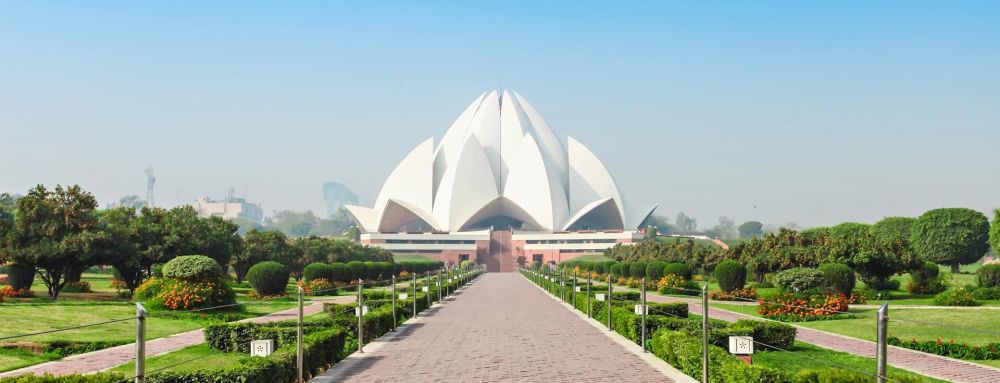

The Lotus Temple, located in Delhi, India, is an exquisite emblem of the Baha'i faith. Officially known as the Baha'i House of Worship, the Lotus Temple is renowned for its remarkable lotus flower-like design and has become one of the city's most visited attractions since its inauguration in 1986. A symbol of unity, peace, and purity, the Lotus Temple invites worshipers from all religions and backgrounds to pray or meditate silently according to their own beliefs.
The Lotus Temple was conceptualized by Iranian architect Fariborz Sahba and has since drawn international attention not only for its spiritual significance but also for its architectural brilliance. The temple's structure is composed of 27 free-standing marble-clad petals arranged in clusters to form nine sides, with nine doors opening onto a central hall capable of holding up to 2,500 people.
Delhi's tourism has been enriched by the Lotus Temple not merely as a place of worship but as a landmark of Indian modernity and spiritual syncretism. The Baha'i faith emphasizes the spiritual unity of all humankind, and the Lotus Temple embodies this principle magnificently.
Delhi's history as a tourist destination is as old as the city itself. With a heritage stretching back several millennia, Delhi has long been a center of power, culture, and tourism in India. The city has been home to several empires and dynasties over the centuries, including the Mughals and the British Raj, each contributing to its rich tapestry of historical landmarks. Attractions such as the Qutub Minar, Red Fort, and Humayun’s Tomb have drawn global tourists for decades.
In recent times, Delhi has seen a surge in heritage walks, food tours, and cultural experiences that showcase the city’s diverse history and lifestyle. The blend of ancient traditions and modern innovations keeps Delhi's tourism landscape dynamic and evolving.
In the age of social media and experiential travel, tourists are increasingly looking for unique, photogenic experiences, and the Lotus Temple, with its striking architecture and serene ambiance, perfectly caters to this new trend. Along with sustainability, there is a growing interest in spiritual tourism, where places such as the Lotus Temple offer tranquility and a break from the hustle of city life.
Responsible tourism is gaining traction, with more travelers being conscious of their environmental footprint and seeking to engage with the local community in respectful ways. Also, there is a rise in the popularity of cultural immersion, with tourists keen to participate in authentic experiences that allow them to understand the local way of life.
Considering the evolving needs of travelers, Delhi's tourism industry is adapting by offering curated experiences, blending historical exploration with modern amenities, focusing on sustainable practices, and ensuring that the growth of tourism does not impede the cultural and architectural integrity of gems like the Lotus Temple.
The Lotus Temple is open to visitors of all faiths, and entry is free. Visitors should note that the temple maintains a strict code of silence inside the prayer hall to maintain its peaceful atmosphere. Photography inside the central hall is not permitted, although the external structure and gardens provide ample photographic opportunities. The temple is typically closed on Mondays, and visitors are encouraged to check the latest timings and visiting protocols potentially impacted by ongoing health advisories.
Whether exploring the timeless history of Delhi or discovering the modern marvels such as the Lotus Temple, the city continues to enchant visitors with its seamless blend of the past and the present, rightly sustaining its image as a top tourist destination within India.